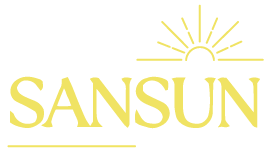Guyana
Customised Itineraries for Adventures in the Wilderness
Guyana remains an undiscovered, nature lovers paradise. Over 80% of the country is classified as forest, with a large part of this belonging to the Amazon rainforest. The nation forms part of the unique Guiana Shield and is a hot spot for bio-diversity with over 8,000 plant and 1,800 animal species. It’s proximity to the islands of the Caribbean means it can offer the perfect partner as part of a dual location holiday as well as on its own.
We are determined to bring travellers to Guyana and ensure the country is recognised as the fantastic tourist location that it is. We work with one of the largest inbound operators in the country whose reputation is unmatched.




Key attractions!
Kaiteur falls
Rainforest
Iwokrama canopy walkway
Birding and wildlife tours
Essequibo river
Rupununi savannah
Guyana Wildlife and Adventure Journey 2025
ITINERARY SUMMARY!
Overnight in Georgetown
Street tour, rum tasting. Overnight in Georgetown.
Fly to Kaiteur for the day and back for overnight in Georgetown
Fly to the lodge, explore trails and overnight at Iwokrama
Boat excursion, hike Turtle Mountain, nocturnal wildlife. Overnight at the lodge
Explore trails. Iwokrama Canopy Walkway. Transfer to and overnight at Atta Rainforest Lodge
Canopy walkway. Wildlife and birdwatching. Overnight at Atta
Transfer to the Cock-of-the-rock trail and then continue to Rock View Lunch for Lunch.
Transfer to Kwatamang Landing and board boat for transfer to Rewa Eco Lodge. Overnight at Rewa Eco-lodge
Awarmie Mountain excursion. Boat up the Rewa Rive, hike to Grass Pond. Overnight at Rewa Eco-lodge
Rainforest hike into savannah. Overnight at Rewa Eco-lodge.
Travel along the Rupununi River to Kwatamang Landing. Native village visit. Boat transfer from Ginep Landing to Karanambu Lodge, wildlife spotting along the way. Overnight at Karanambu Lodge
Wildlife excursions and bird watching. Overnight at Karanambu Lodge
Wildlife excursions. Boat transfer. Overnight at Caiman House. BLD
Overnight in Georgetown
Key Information
Currency
The unit is the Guyanese dollar. There are notes for $20, $50, $100, $500, $1000, $2000 and $5,000. Coins are for $1, $5 and $10.
Credit Cards
Credit cards are not widely accepted and you should check prior to using the service. Most major hotels and some restaurants will accept credit cards. Kindly note some places have a service charge on credit cards.
Interior Transport
Guyana has very few sealed or dirt roads. This makes travel into the interior difficult and challenging. Long distances are covered by small aircraft which make journeys quick, comfortable and an adventure.
Once in the interior you may use many forms of transport depending on your itinerary. From the small interior airstrip, travel is then normally by four-wheel drive jeep or truck, mini bus, boat, or even a mixture of these modes of transport.
Travel is part of the experience and adventure and can be a component of the highlights of a trip. However, the nature of the often-difficult travel can mean there may be delays due to mechanical breakdown, a tree across the road, a flooded river etc.
Climate
The climate is tropical, with average temperatures ranging from 27°C to 31°C. The heat is tempered by cooling breezes from the sea and surrounding mountains. There are two wet seasons, from May to June and from December to January, which may extend into months either side. The annual rainfall is 2,300 mm
Local Food
The blend of different ethnic influences gives a distinctive flavor to local cuisine. If you haven’t already advised us of your dietary requirements, it is imperative you do so immediately.
Drink
Rum is the most popular drink in Guyana which is known for its world-class rums, such as El Dorado. There are also good local beers, such as Banks Beer and you will also find imported beers from other countries.
Water
The water from the tap can be brownish in color, which is from the tannin in the water, and not polluted. However, it is recommended that purified water, which is readily available, is used for drinking. Remember to drink plenty of it to prevent dehydration. In recent weeks it has been unusually hot in Guyana, please ensure to keep hydrated throughout your journey.
In keeping with green and sustainable practices, there are refill water stations at lodges and during excursions in Guyana. As such, be sure to bring a long a refillable water bottle or one will be provided to you. Normally a complimentary bottle of water or two is offered at the lodges after which you pay for subsequent bottles.
Internet
Perhaps surprisingly you will have quite a bit of internet access as you travel around. These remote locations use satellite internet for communications. Just ask at each location if they have internet and how to access it.
Power
In Georgetown, it is predominately 110 volts, though some areas also have 220 volts. In the interior power is mainly by solar and generator on standby and is 110 volts. Guyana uses the 2 pin flat American type outlets.
Tipping
Tipping is not expected, but it is appreciated if you are happy with the service. As a guide, GY$2000/US$10 per person, per guide, per day or GY$8000-GY$10,000/US$40-US$50 per group, per guide, per day tip is considered adequate to tip guides.
In the interior of Guyana, it is suggested that tips are given to the lodge manager or village captain for equal distribution amongst all involved in making your trip memorable. There are no facilities for exchanging money in the interior, so it is easier to give a tip in Guyanese dollars.
Time Zone
Guyana and Trinidad are four hours behind GMT; five hours during UK Daylight Savings. It is one hour behind EST USA time and the same time during daylight savings.
General Interest
Population: 780,000 approx.
Area
214,970 sq. km. (83,000 sq. mls.) Approximately the size of Britain.
Languages
Guyana is South America’s only English-speaking country. Some Amerindian communities also speak their indigenous language. Creole, which is a Pidgin English, is also widely spoken.
Population Density
3.4 per sq. km. Ranked 227th in the world. By comparison England is 388.7 persons per sq. km. London has over 3000 per sq. km.
Coastline
459 km.
Land Boundaries
2,462 km.
Highest Elevation
Mount Roraima 2,810 m. Forms the border with Guyana, Brazil and Venezuela.
Lowest Elevation
Georgetown –2 m at high tide. This necessitates an elaborate system of drainage canals and sluice gates to drain water at low tide.
Geography
The country has four distinctive geographical zones: the coastal belt, the forested area, the savannah zone and the sandy zone. Over 80% of the land mass is still covered in pristine forest, and only 2.5% is cultivated
Location
Guyana lies on the north-east corner of the South American continent between latitudes 1° and 9° N and longitude 56° and 62° W.
Rivers
Guyana means “Land of many waters” and the country is full of rivers. These form an important water highway system for traveling in remote areas where there are no roads. The Essequibo River is the world’s 3rd widest river after the Amazon (Brazil) and the Orinoco (Venezuela). It is 21 miles wide at the mouth. Other major rivers are the Demerara and Berbice.
National Flower
Victoria Amazonica (formerly known as Victoria Regia)
National Bird
Hoatzin, locally known as Canje Pheasant







